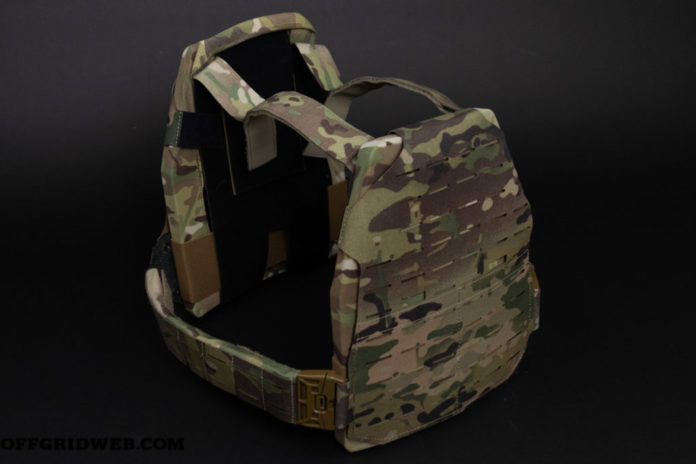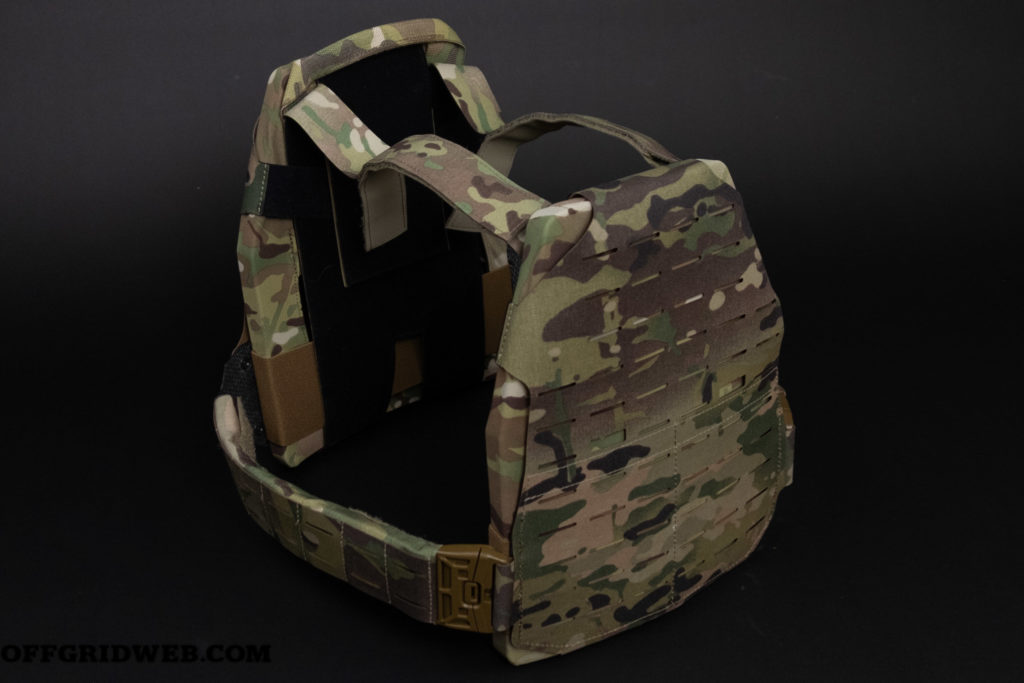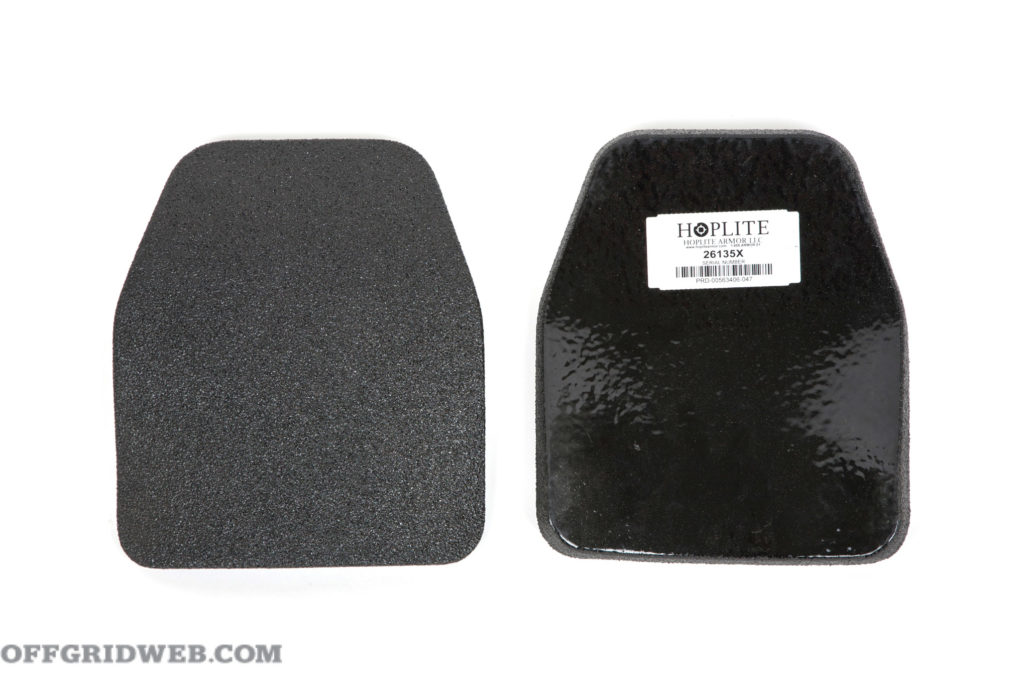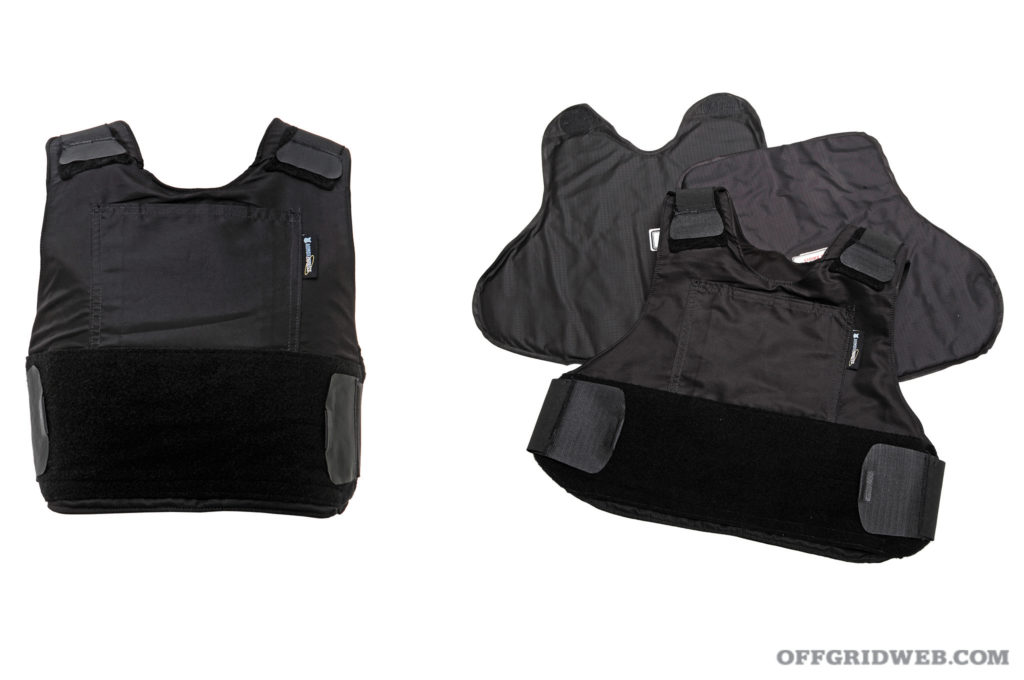On its face, the concept of body armor seems rather self-explanatory: better to have it and not need it, than the opposite. Having said that, body armor is a specific tool designed for a specific purpose and, more importantly, a certain environment. Let’s take a look at the concept of Body Armor in the 21st century, and hone in on various uses and applications, as well as relevancy against the current threats an prepared citizen might face.
Modern Body Armor Theory
When we think of modern body armor, two things typically come to mind: the plate carriers worn by those in the military and the vests worn by police officers, political officials, and VIPs in both film and the real world. Although most people consciously recognize the difference between the real world and the virtual, it cannot be over-emphasized the importance of drawing a hard line between how body armor is represented in video games and movies, and the very real, very dangerous world. Both are bound to various constraints, but it would be catastrophic to confuse in-game statistics with NIJ level ratings of body armor.
Modern Body armor was created as a reaction to the dominant violent threats of the day: bullets and blades. The colloquial difference between hard and soft body armor is often simplified down to the ability of plates to stop rifle rounds which typically move at such velocity to pass straight through flexible kevlar vests. However, in the decades since these types of equipment arrived in military and law enforcement hands, two dynamics have changed: firearms and munition types, and a rise in civilian ownership of both guns and body armor.
Above: The S&S Precision PlateFrame Redux reprents a high end minimalist plate carrier
Foundational to the use of body armor is understanding how bullets, blades, and blunt force objects interact with the human body. It is said “the body is made up of timers and switches,” where if one organ is destroyed the person dies immediately, but if another is lost, there could still be seconds, minutes, hours, or days before death occurs. Losing blood or preventing oxygen from reaching the brain acts as a timer, but the severing of the nervous system can work as a switch. The lethality of a knife or gunshot wound is determined by the amount of time it takes to make the victim functionally unresponsive, and this guides the application of body armor.
When it comes to bodily organs, one could say that the intestines are almost as vital as the heart and lungs, especially in regard to day-to-day living. Digestion, Respiration, and the Circulatory system all work together, but the sudden disabling of each system impacts the body at different rates. Which is why properly worn body armor covers the heart and lungs, as well as some of the spine. The purpose of Body Armor is to increase the likelihood that an injured person will live long enough to reach a hospital in the event they suffer wounds typical to modern combat. Plate carriers and soft armor protect the organs that, if harmed, would result in death before surgical-level medical care could take place.
Takeaways:
- Body Armor is for a world with Hospitals.
- Properly-fit, and properly-worn Body Armor protects the heart and lungs: the most vital organs in the short term.
Modern Body Armor Dynamics
Beyond theory, modern body armor introduces unique dynamics into any survival scenario: logistically, physically, and socially. Each of these dynamics applies to both a group and to an individual, sometimes differently.
Logistics: Whether as an individual or as a group, one must deal with how body armor is acquired, transported, and stored. Militaries may be able to source gear for a whole unit and are bound by internal standards for protection levels and storage requirements. But the individual must face the market without the resources of an agency or organization to do the research or purchasing for them. This means that they may not have the ability to purchase multiple levels or types of body armor from the beginning, and they must rely on external resources to inform their decision. The individual will also be solely responsible for care of the armor. For soft armor, improper long-term storage can create folds, ridges or pockets that create gaps between the outer carrier and the Kevlar layers inside. Likewise, hanging a vest for long period can cause the Kevlar panels to “sag” inside the vest itself, again creating coverage gaps. For plates, the primary concern is impact. Bumping, dropping or hitting hard plates can creates dents or micro-cracks that reduce the plate’s ability to fully stop incoming fire.
Physical: Body armor, be it hard plates or soft armor, changes how a person moves and carries themselves. Beyond the weight alone, it can make riding in a vehicle difficult if not impossible, and the physical limitations of the wearer (such as those based on injuries, illnesses or physical fitness level) are only amplified under the increased burden. Without consistent practice, carrying the weight debilitates some on even an easy day, and quickly turns a bad situation worse. For those not able to perform in the gear, body armor quickly becomes a net negative.
Regardless if you are operating as an individual or as part of a group, deliberate training and practice with body armor is necessary. Regardless of how much training an individual completes in body armor, it will always impact their ability to cover terrain, with increasing effects over time.
Above: A fully loaded plate carrier will provide the best protection, but will almost certainly draw attention.
Social: As much as we could wax poetic about the Second Amendment in principle, it simply is not common in most Western countries to see people walking around in body armor of any sort, with the closest exception being city police. In some social situations, gear of this sort is viewed as a symbol of authority and, in others, it stands out as a target. Whether out of suspicion or admiration, body armor is most often seen and treated as a sign of intent: one does not wear it simply for fashion, training classes and range days notwithstanding.
Takeaways:
- The acquisition, storage, and implementation of body armor requires proactive attention.
- Unlike a jacket, it is equipment that requires familiarization and practice to wear properly.
- Body Armor will draw attention, in useful or harmful ways depending on the circumstances.
Modern Body Armor Situations
The phrase “mission dictates gear” works well in clearly defined military circumstances, such as night raids or long-distance reconnaissance movements, but when it comes to something as ambiguous as survival we are faced with a much more abstract problem. In order to properly apply body armor in a survival situation, we must define the mission.
For all application considerations, it will be assumed that the wearer is capable and practiced in wearing body armor.
Group vs Individual
A lone individual will have to assess whether it is better for their situation to attempt to socially blend in if possible, or stand out due to the greater likelihood of receiving small arms fire. In the event that a gunfight is inevitable, opting for armor will increase their chances of survival, but such situations are extremely rare.
In most families, there is at least one person who cannot effectively wear body armor, be they children, the elderly, or those with physical conditions. This adds a dynamic unique to civilian survivors and magnifies the complications a sole individual would face, because the family may choose to acquire more gear and thus accrue more cost. For those who can wear body armor, not all will experience the same comfort and protection level based on body type and fitness level.
One step higher, at the level of a neighborhood, the greatest level of complication manifests across all dynamics. It is all but guaranteed that the diversity of skill and equipment across larger groups will vary so greatly and, depending on personalities, could produce internal strife. Most people in a neighborhood do not have their own body armor and, of those who do, even fewer are capable with it.
Effectively a collection of individuals and families who have, in all likelihood, not organized or trained with each other before an emergency scenario, it is unreasonable to assume common equipment and skill level. But if unified by community esirit de corps, or sheer self-preservation, the abilities of some can greatly benefit the whole. A community that coordinates an armed and armored security force will eventually be faced with how others react to the group’s appearance. Those leary of gangs, militias, or the actions of the State may view impromptu security with suspicion. For example, look at how the “guards” of Seattle’s CHAZ/CHOP were perceived by the surrounding neighborhoods, city officials, and the nation.
Short Term versus Long Term
A situation will determine if, how, and which type of body armor should be used. A traditional divide between military or government activities, and those of individual citizens is shifting, if not dissolving in the 21st century. With situations such as the American riots of 2020, and the takeover of Kabul by the Taliban in 2021, survival in the short term can mean reaching a safe house, escaping a city, or protecting a neighborhood until relative peace returns. Even in these scenarios, the physical requirements of body armor demand them to be a proactive measure, not merely a reaction.
The distinction between short-term and long-term use of body armor is determined by the level of sustainment available. By consulting Maslow’s Hierarchy of Needs, we note that food, water, warmth, and rest are more important than the security that body armor brings in a long-term crisis. It is here that we begin to find a holistic application of such equipment. In regard to survival, a plate carrier is the means to live through a short-term crisis. But only if there is access to food and shelter will it have long-term viability at defending such resources.
The terms proactive and reactive, in regard to body armor, do not necessarily translate into offensive and defensive.
Takeaways
- Proactive vs. Reactive: It is absolutely vital to first consider the need, and acquire body armor to meet that goal, instead of first buying gear and later try to find a use for it.
- The application differs for an individual, family, or community
- Not everyone’s skill, comfort, and equipment levels will be equal in a group or family setting.
- Body Armor is a tool in the short term
Types Determined by Threat
The National Institute of Justice (NIJ) categorizes different levels or standards of body armor according to what types of threats they can stop. A manufacturer may state that their armor meets or exceeds a specific level, but not all have been NIJ certified. The history behind these levels is best understood as being developed to address specific threats, most often directed towards different international conflicts. The development of technology and material has been gently guided by the needs of the NIJ, not necessarily private citizens, in order to produce the current categories.
Above: Soft armor is easier to wear underneath clothing, but provides less protection.
While the NIJ rating for bullet-stopping capabilities begins at IIA and currently goes as high as IV, each of the standards is specified by the type and velocity of the projectile. It can be safely generalized that, at the time of writing, soft armor stops most handgun rounds between 9mm and .44 magnum, so long as the armor achieves at least a Level IIA rating.
The two NIJ ratings for hard plates are:
-Level III which are rated to stop a 7.62 mm projectile traveling at 2780 ft/s ± 30 ft/s (non-armor-piercing .308)
-Level IV which are rated to stop .30 caliber at 2880 ft/s ± 30 ft/s (military-grade armor-piercing projectiles in .30-06)
-Level III plates will stop standard 7.62x39mm AK rounds (except for the mild steel core variation) but will not stop M855 “green tip” 5.56mm rounds, which are prolific in the US. The matter is only further complicated by the great variety of projectile types and barrel lengths found in the United States. As a result, various manufacturers have begun making what is commonly referred to as “special threat plates,” or “Level III+” plates. These are boutique armor plates that fall short of Level IV, but typically cover the “light armor piercing” gray space where 5.56mm green tip and 7.62x39mm steel core live. It should be noted that Level III+ and Special Threat Rated are not an official NIJ ratings, and buyers should review manufacturers specs carefully. Don’t be afraid to ask a company about their testing/rating process. The good ones typically use an independent research laboratory to certify their plates against specific threats, whether or not they are within the specific NIJ rating system.
Takeaways:
- Body Armor is categorized into levels according to what NIJ standards they meet.
- Read the fine print: some are NIJ certified, others use non-standard certification methods.
- Soft Armor can stop pistol rounds, but Hard Armor is required to stop rifle rounds.
Finally, Application
Theory, dynamics, and situational considerations come together to provide the framework for both if and how body armor would be implemented in known and suspected events.
Three recent examples provide the context for what such a survival situation might look like: the worldwide 2020 riots, the prolonged civil unrest in cities like Portland, and the violent upheaval of nation-states like Venezuela and, more recently, Afghanistan.
Riot Season
From theory, we recognize that body armor belongs in a world with hospitals. During the Minneapolis riots of 2020, individual citizens volunteered to protect their communities from those who took advantage of the chaos and outrage. In some cases, this drew attention to their neighborhoods but, in the end, those who stood up for themselves were mostly left untouched. In the event that “things went wrong” the hospitals were still up and running, and capable of treating injuries from burns to gunshot wounds. As buildings burned, some chose to leave the city, opting to live with families until the unrest died down.
Above: The Ferro Concepts Slickster can quickly be scaled up and down to the needs of the moment.
From street demonstrations to the rooftops of local businesses, AR-15’s, shotguns, and handguns became a normal sight in certain areas. Protestors could be seen wearing body armor and carrying AR-style firearms through downtown Minneapolis. In events like evacuations, personal armor went a long way to add security to an otherwise chaotic environment. In the short term, body armor was a means to an end.
Above: If trying to conceal a minimalist plate carrier under a full sized shirt, opt for something with a pattern. It will help disguise the body armor from unsuspecting eyes, but those who know what to look for will still be able to spot it.
In terms of body armor, both soft and hard options have something to offer. To this day, handguns are the most used firearm in violent crime, especially in deeply urban environments. Properly rated soft armor, being easier to conceal, and requiring less familiarization, could be one of the few examples where the phrase “better than nothing” is not the pitch of a snake oil salesman.
Prolonged Unrest
But in some parts of the city and the country, the unrest became a prolonged reality with no clear end in sight. This is the ideal place for Body Armor to show its value, as the medical institutions continued to function, despite the unrest, treating all who entered their doors with medical attention. As factions continued to clash in the street, non-participants in the area were caught in the crossfire, often to tragic ends.
Above: Even under a hoodie, the edges of a plate carrier will still stand out.
It would be a stretch to argue that body armor should be worn daily to and from the grocery store. Rather, the ability for a family or individual to use it in the event a local street fight (or gunfight) takes place in their front yard or brings comfort in the day-to-day, as well. Prolonged unrest resides in the uncertainty between the likelihood of order restoring, and the possibility of violent revolution or societal breakdown. Many of the greatest dangers in these situations are psychological and mental, as those caught in the crossfire are faced with a hard decision: hold on to hope that the violence will end soon, or leave the area, possibly indefinitely.
Prolonged unrest is an ideal example of how body armor can benefit the private citizen, as these events are often defined by the crippling of police response and a considerable rise in local crime. Body armor can bring a sense of comfort, and a capability, albeit small, and improves one’s position whether they choose to remain in place or leave the area.
Brave New World
Since even the concept of a total-collapse scenario quickly devolves into near-infinite possibilities, it should never be the starting point at which one considers body armor. This means that one should not make decisions on if or what type of body armor they invest in with the apocalypse in mind. This protects against panic buying and facilitates a proactive, productive approach to self-defense and survival.
In Conclusion
Body Armor is, first and foremost, a tool to be used to aid the accomplishment of certain objectives. The ambiguity of survival as an objective must be refined by the parameters of your individual situation: urban vs. rural, bug-in vs. bug-out, solo vs family-, or community-level planning, and so forth. Not all armor is created equal, and it is far from magic. Instead, body armor is best seen as a supporting option, not a solution in and of itself. That being the case, the support it brings extends beyond the physical, as it can add a small sense of security to an otherwise chaotic situation.
Plate Carriers Featured
S&S Precision PlateFrame-Redux
Colors: Black, Multicam, Tan, Toadvine
MSRP: $372
URL: sandsprecision.com
S&S Precision PlateFrame-Modular
Colors: Black, Multicam, Tan, Toadvine
MSRP (Base): $1,142 (as Bundle at time of writing with additional 3x AR-15 Mag shingle)
URL: sandsprecision.com
Ferro Concepts Slickster
Colors: Black, Coyote Brown, Ranger Green, Wolf Grey, Multicam, Multicam Black
MSRP: $16o
URL: www.ferroconcepts.com
First appeared first on RECOIL OFFGRID.









